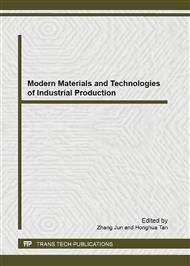p.441
p.447
p.455
p.463
p.469
p.474
p.478
p.487
p.495
A Curled Piezoelectric Cantilever for Two Dimensional Vibration Energy Harvesting
Abstract:
To harvest ambient vibration energy of different directions, a micromachined vibration energy harvester which can harvest two-dimensional vibration energy was proposed. The harvester is composed of a curled piezoelectric cantilever, a proof mass and the substrate. One end of the cantilever is fixed onto the substrate and the other end is connected with a proof mass. It is the residual stress of micromachining processes that causes the cantilever to curl. A proof-of-concept prototype of the two-dimensional vibration energy harvester was assembled and tested to evaluate the performance. Experimental results show that the vibration direction with the highest energy scavenging efficiency changed with the frequency of the ambient vibration. The vibration energy of any direction in the neutral plane of the curled cantilever can be harvested by using the first two natural vibration modes of the prototype.
Info:
Periodical:
Pages:
469-473
Citation:
Online since:
September 2013
Authors:
Keywords:
Price:
Сopyright:
© 2013 Trans Tech Publications Ltd. All Rights Reserved
Share:
Citation:


